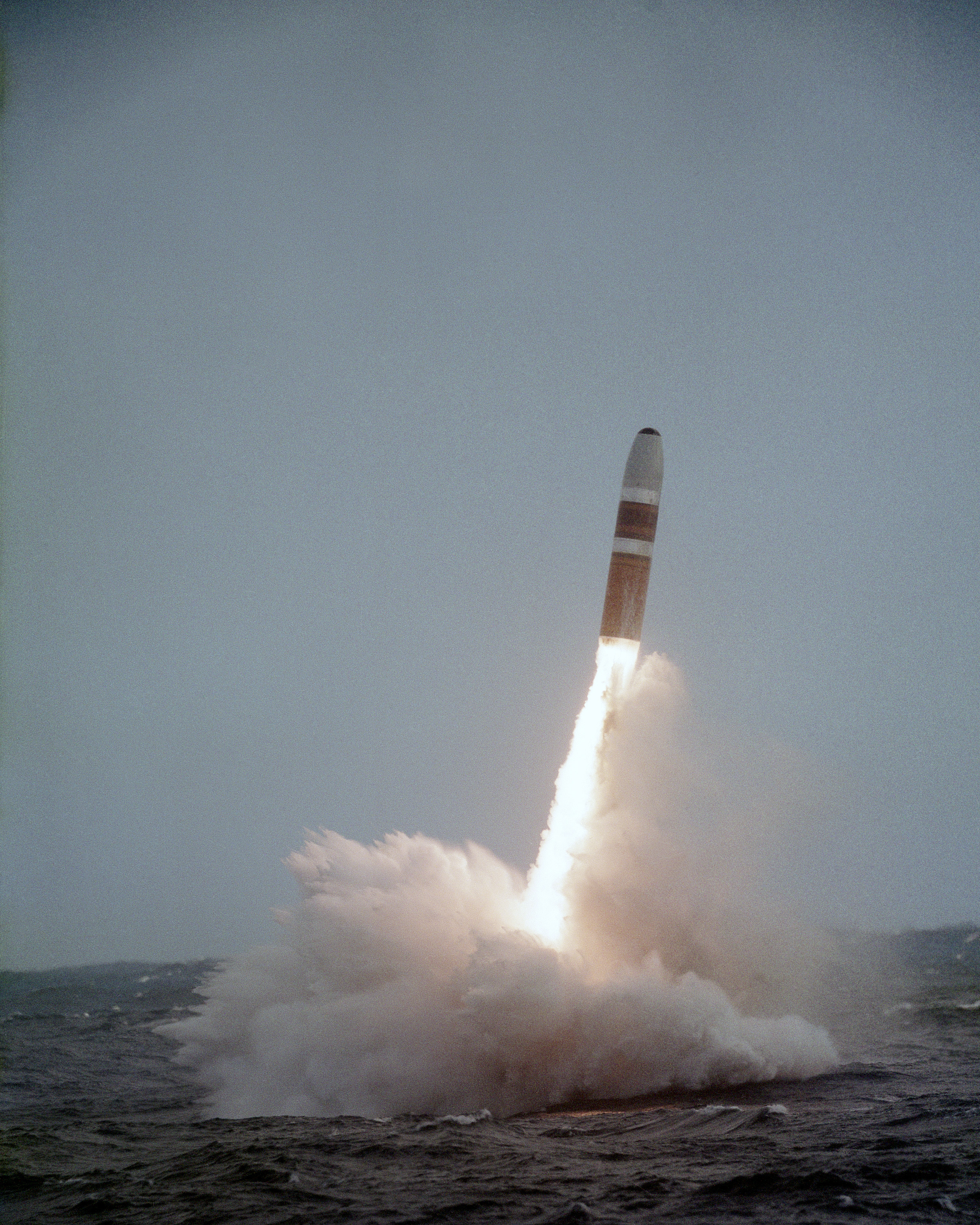|
Lockheed Martin Space
Lockheed Martin Space is one of the four major business divisions of Lockheed Martin. It has its headquarters in Littleton, Colorado, with additional sites in Valley Forge, Pennsylvania; Sunnyvale, California; Santa Cruz, California; Huntsville, Alabama; and elsewhere in the United States and United Kingdom. The division currently employs about 16,000 people, and its most notable products are commercial and military satellites, space probes, missile defense systems, NASA's Orion spacecraft, and the Space Shuttle external tank. History The Lockheed Missile Systems Division was established in Van Nuys, California, in late 1953 to consolidate work on the Lockheed X-17 and X-7. The X-17 was a three-stage solid-fuel research rocket designed to test the effects of high mach atmospheric reentry. The X-17 was also used as the booster for the Operation Argus series of three high-altitude nuclear tests conducted in the South Atlantic in 1958. The Lockheed X-7 (dubbed the "Flying Stove ... [...More Info...] [...Related Items...] OR: [Wikipedia] [Google] [Baidu] |
Lockheed Martin
The Lockheed Martin Corporation is an American aerospace, arms, defense, information security, and technology corporation with worldwide interests. It was formed by the merger of Lockheed Corporation with Martin Marietta in March 1995. It is headquartered in North Bethesda, Maryland, in the Washington, D.C. area. Lockheed Martin employs approximately 115,000 employees worldwide, including about 60,000 engineers and scientists as of January 2022. Lockheed Martin is one of the largest companies in the aerospace, military support, security, and technologies industry. It is the world's largest defense contractor by revenue for fiscal year 2014.POC Top 20 Defence Contractors of 2014 . Retrieved: July 2015 In 2013, 78% of Lockheed Martin's revenues came from military sales; [...More Info...] [...Related Items...] OR: [Wikipedia] [Google] [Baidu] |
Operation Argus
Operation Argus was a series of United States low-yield, high-altitude nuclear weapons tests and missile tests secretly conducted from 27 August to 9 September 1958 over the South Atlantic Ocean. The tests were performed by the Defense Nuclear Agency. The tests were to study the Christofilos effect, which suggested it was possible to defend against Soviet nuclear missiles by exploding a small number of nuclear bombs high over the South Pacific. This would create a disk of electrons over the United States that would fry the electronics on the Soviet warheads as they descended. It was also possible to use the effect to blind Soviet radars, meaning that any Soviet missile-based ABM system would be unable to attack the US counterstrike. The tests demonstrated that the effect did indeed occur, but also revealed that it dissipated too rapidly to be very effective. Papers on the topic were published the next year, focusing on the events as purely scientific endeavors. Objectives ... [...More Info...] [...Related Items...] OR: [Wikipedia] [Google] [Baidu] |
KH-7 Gambit
BYEMAN codenamed GAMBIT, the KH-7 (Air Force Program 206) was a reconnaissance satellite used by the United States from July 1963 to June 1967. Like the older CORONA system, it acquired imagery intelligence by taking photographs and returning the undeveloped film to earth. It achieved a typical ground-resolution of to . Though most of the imagery from the KH-7 satellites was declassified in 2002, details of the satellite program (and the satellite's construction) remained classified until 2011. In its summary report following the conclusion of the program, the National Reconnaissance Office concluded that the GAMBIT program was considered highly successful in that it produced the first high-resolution satellite photography, 69.4% of the images having a resolution under ; its record of successful launches, orbits, and recoveries far surpassed the records of earlier systems; and it advanced the state of the art to the point where follow-on larger systems could be developed an ... [...More Info...] [...Related Items...] OR: [Wikipedia] [Google] [Baidu] |
Corona (satellite)
The CORONA program was a series of American strategic reconnaissance satellites produced and operated by the Central Intelligence Agency (CIA) Directorate of Science & Technology with substantial assistance from the U.S. Air Force. The CORONA satellites were used for photographic surveillance of the Soviet Union (USSR), China, and other areas beginning in June 1959 and ending in May 1972. History In 1957, the Soviet Union launched Sputnik 1, the first artificial Earth satellite. Officially, Sputnik was launched to correspond with the International Geophysical Year, a solar period that the International Council of Scientific Unions declared would be ideal for the launching of artificial satellites to study Earth and the solar system. However, the launch led to public concern about the perceived technological gap between the West and the Soviet Union. The unanticipated success of the mission precipitated the Sputnik Crisis, and prompted President Dwight D. Eisenhower to auth ... [...More Info...] [...Related Items...] OR: [Wikipedia] [Google] [Baidu] |
RM-81 Agena
The RM-81 Agena was an American rocket upper stage and satellite bus which was developed by Lockheed Corporation initially for the canceled WS-117L reconnaissance satellite program. Following the split-up of WS-117L into SAMOS and Corona for image intelligence, and MIDAS for early warning, the Agena was later used as an upper stage, and an integrated component, for several programs, including Corona reconnaissance satellites and the Agena Target Vehicle used to demonstrate rendezvous and docking during Project Gemini. It was used as an upper stage on the Atlas, Thor, Thorad and Titan IIIB rockets, and considered for others including the Space Shuttle and Atlas V. A total of 365 Agena rockets were launched between February 28, 1959 and February 1987. Only 33 Agenas carried NASA payloads and the vast majority were for DoD programs. On some missions, the payload was built directly into the Agena, which provided it with electric power, communications and three-axis stabilization. P ... [...More Info...] [...Related Items...] OR: [Wikipedia] [Google] [Baidu] |
UGM-133 Trident II
The UGM-133A Trident II, or Trident D5 is a submarine-launched ballistic missile (SLBM), built by Lockheed Martin Space in Sunnyvale, California, and deployed with the US Navy, American and Royal Navy, British navies. It was first deployed in March 1990, and remains in service. The Trident II Strategic Weapons System is an improved SLBM with greater accuracy, payload, and range than the earlier UGM-96 Trident I, Trident C-4. It is a key element of the U.S. strategic nuclear triad and strengthens U.S. deterrence theory, strategic deterrence. The Trident II is considered to be a durable sea-based system capable of engaging many targets. It has payload flexibility that can accommodate various treaty requirements, such as New START. The Trident II's increased payload allows nuclear deterrence to be accomplished with fewer submarines, and its high accuracy—approaching that of intercontinental ballistic missile, land-based missiles—enables it to be used as a pre-emptive nuclear str ... [...More Info...] [...Related Items...] OR: [Wikipedia] [Google] [Baidu] |
UGM-96 Trident I
The UGM-96 Trident I, or Trident C4, was an American submarine-launched ballistic missile (SLBM), built by Lockheed Martin Space Systems in Sunnyvale, California. First deployed in 1979, the Trident I replaced the UGM-73 Poseidon, Poseidon missile. It was retired in 2005, having been replaced by the UGM-133 Trident II, Trident II. The missile was a three-stage, solid-fuel rocket, solid-fuelled system, capable of carrying up to eight W76 warheads in the Mark 4 RB. The first eight s were armed with Trident I missiles. Twelve - and s were also retrofitted with Trident I missiles, which replaced older UGM-73 Poseidon, Poseidon missiles. In 1980, the Royal Navy requested Trident I missiles under the Polaris Sales Agreement. In 1982, the agreement was changed to supply Trident II instead. See also * Trident (missile) * UGM-133 Trident II References Cold War weapons of the United States Nuclear weapons of the United States Cold War submarine-launched ballistic missiles of ... [...More Info...] [...Related Items...] OR: [Wikipedia] [Google] [Baidu] |
UGM-73 Poseidon
The UGM-73 Poseidon missile was the second US Navy nuclear-armed submarine-launched ballistic missile (SLBM) system, powered by a two-stage solid-fuel rocket. It succeeded the UGM-27 Polaris beginning in 1972, bringing major advances in warheads and accuracy. It was followed by Trident I in 1979, and Trident II in 1990. Development A development study for a longer range version of the Polaris missile—achieved by enlarging it to the maximum possible size allowed by existing launch tubes—started in 1963. Tests had already shown that Polaris missiles could be operated without problems in launch tubes that had their fiberglass liners and locating rings removed. The project was given the title Polaris B3 in November, but the missile was eventually named Poseidon C3 to emphasize the technical advances over its predecessor. The C3 was the only version of the missile produced, and it was also given the designation UGM-73A. Slightly longer and considerably wider and heavier than Po ... [...More Info...] [...Related Items...] OR: [Wikipedia] [Google] [Baidu] |
USS Ethan Allen
Two ships of the United States Navy have been named USS ''Ethan Allen'' in honor of Ethan Allen, the guerrilla leader of the Green Mountain Boys. * The first was a bark that raided the Confederate States of America during the American Civil War. * The second was the lead ship of her class of ballistic missile submarine that served during the Cold War. Similar named * SS ''Ethan Allen'' was a Liberty ship laid down by Bath Iron Works Bath Iron Works (BIW) is a major United States shipyard located on the Kennebec River in Bath, Maine, founded in 1884 as Bath Iron Works, Limited. Since 1995, Bath Iron Works has been a subsidiary of General Dynamics. It is the fifth-largest de ... 7 January 1942, launched 16 August 1942 and scrapped 1960.. {{DEFAULTSORT:Ethan Allen United States Navy ship names ... [...More Info...] [...Related Items...] OR: [Wikipedia] [Google] [Baidu] |
United States Navy
The United States Navy (USN) is the maritime service branch of the United States Armed Forces and one of the eight uniformed services of the United States. It is the largest and most powerful navy in the world, with the estimated tonnage of its active battle fleet alone exceeding the next 13 navies combined, including 11 allies or partner nations of the United States as of 2015. It has the highest combined battle fleet tonnage (4,635,628 tonnes as of 2019) and the world's largest aircraft carrier fleet, with eleven in service, two new carriers under construction, and five other carriers planned. With 336,978 personnel on active duty and 101,583 in the Ready Reserve, the United States Navy is the third largest of the United States military service branches in terms of personnel. It has 290 deployable combat vessels and more than 2,623 operational aircraft . The United States Navy traces its origins to the Continental Navy, which was established during the American Revo ... [...More Info...] [...Related Items...] OR: [Wikipedia] [Google] [Baidu] |
Cold War
The Cold War is a term commonly used to refer to a period of geopolitical tension between the United States and the Soviet Union and their respective allies, the Western Bloc and the Eastern Bloc. The term '' cold war'' is used because there was no large-scale fighting directly between the two superpowers, but they each supported major regional conflicts known as proxy wars. The conflict was based around the ideological and geopolitical struggle for global influence by these two superpowers, following their temporary alliance and victory against Nazi Germany and Imperial Japan in 1945. Aside from the nuclear arsenal development and conventional military deployment, the struggle for dominance was expressed via indirect means such as psychological warfare, propaganda campaigns, espionage, far-reaching embargoes, rivalry at sports events, and technological competitions such as the Space Race. The Western Bloc was led by the United States as well as a number of other First W ... [...More Info...] [...Related Items...] OR: [Wikipedia] [Google] [Baidu] |
Submarine-launched Ballistic Missile
A submarine-launched ballistic missile (SLBM) is a ballistic missile capable of being launched from submarines. Modern variants usually deliver multiple independently targetable reentry vehicles (MIRVs), each of which carries a nuclear warhead and allows a single launched missile to strike several targets. Submarine-launched ballistic missiles operate in a different way from submarine-launched cruise missiles. Modern submarine-launched ballistic missiles are closely related to intercontinental ballistic missiles (ICBMs), with ranges of over , and in many cases SLBMs and ICBMs may be part of the same family of weapons. History Origins The first practical design of a submarine-based launch platform was developed by the Germans near the end of World War II involving a launch tube which contained a V-2 ballistic missile variant and was towed behind a submarine, known by the code-name ''Prüfstand XII''. The war ended before it could be tested, but the engineers who had worked o ... [...More Info...] [...Related Items...] OR: [Wikipedia] [Google] [Baidu] |
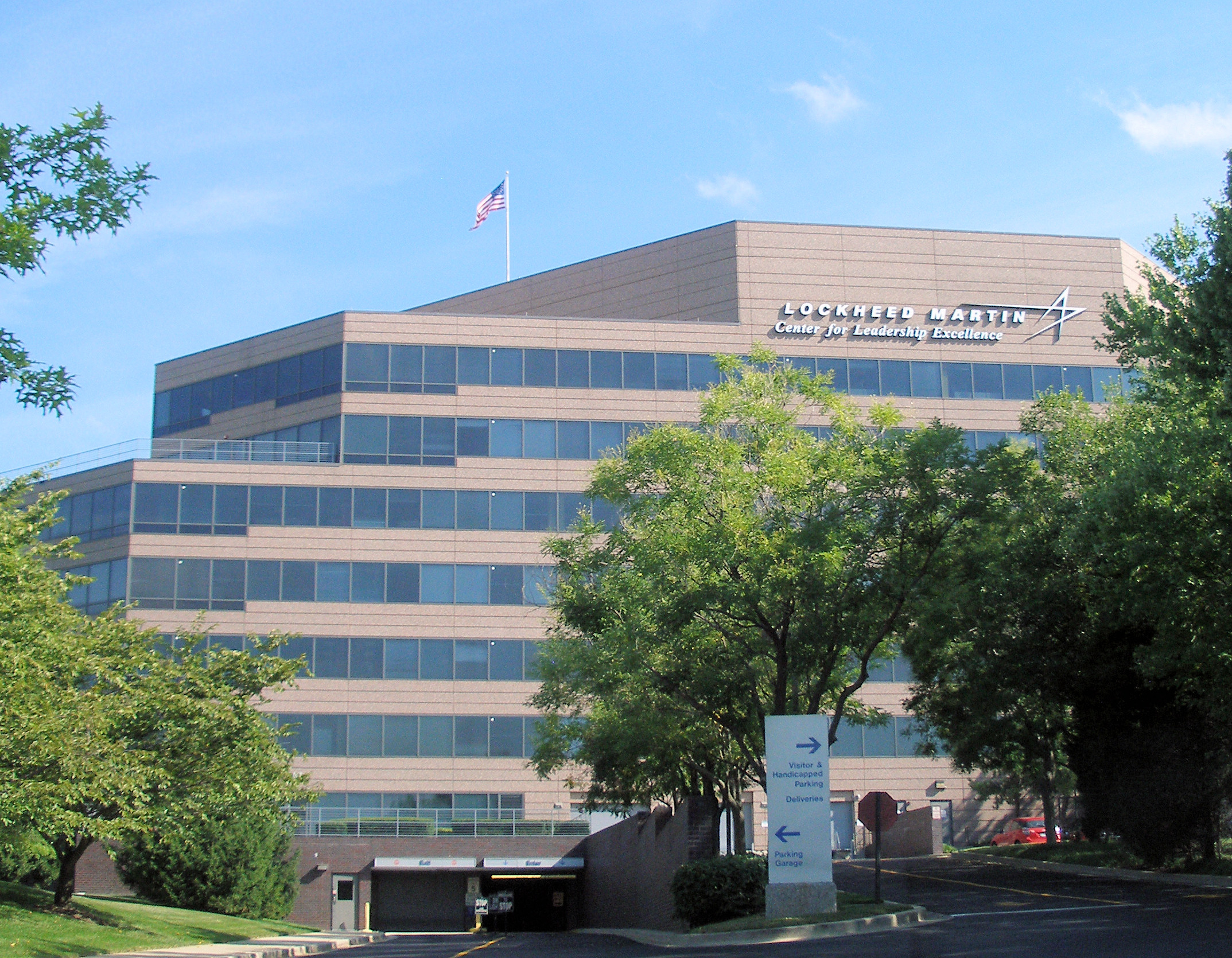

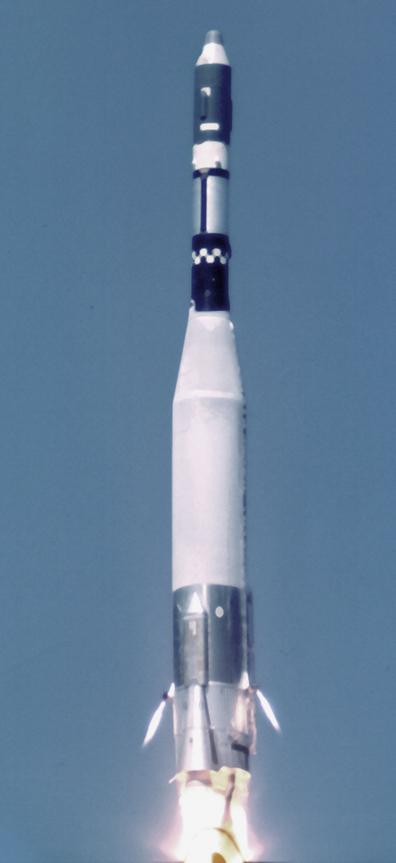

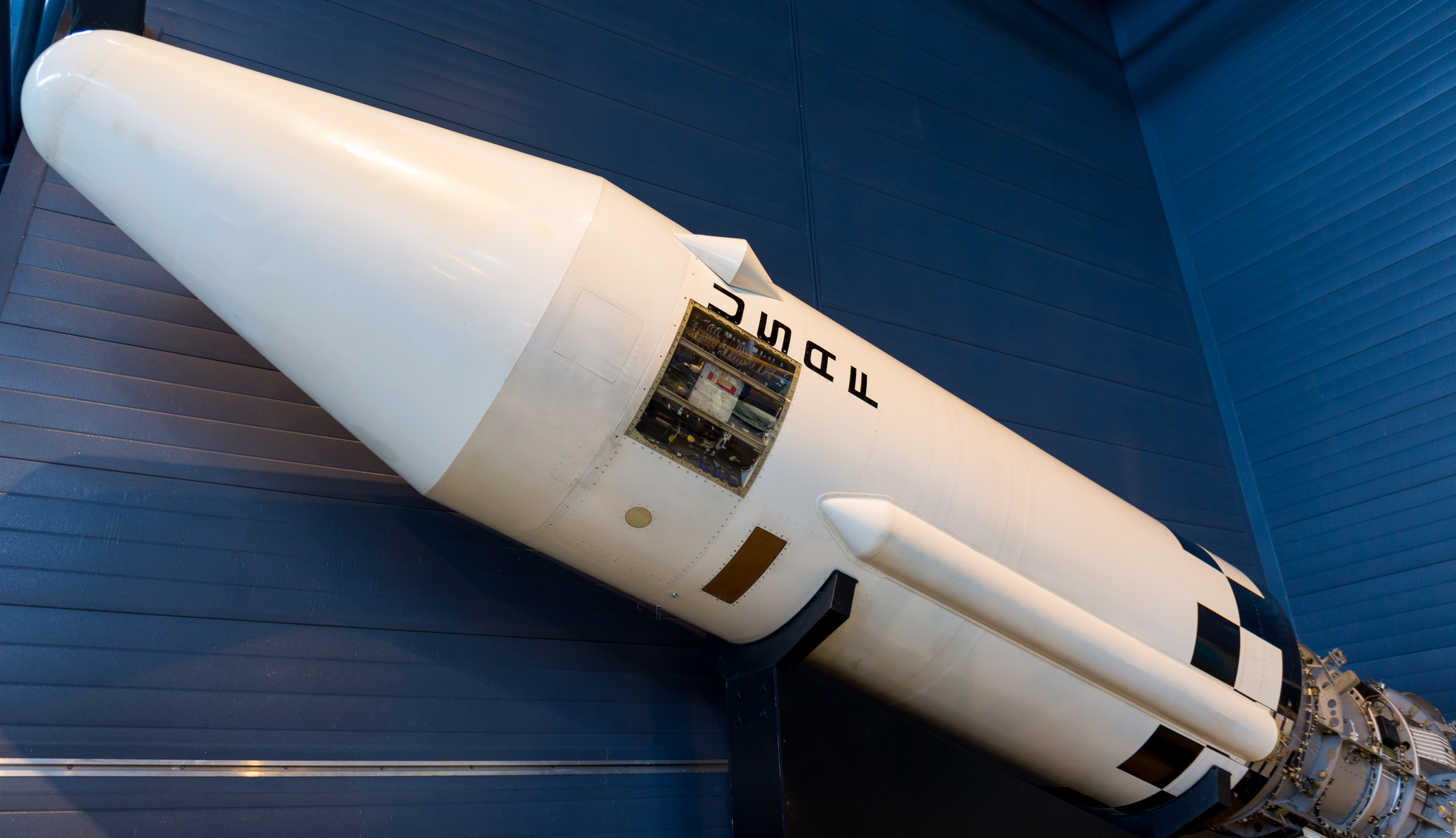
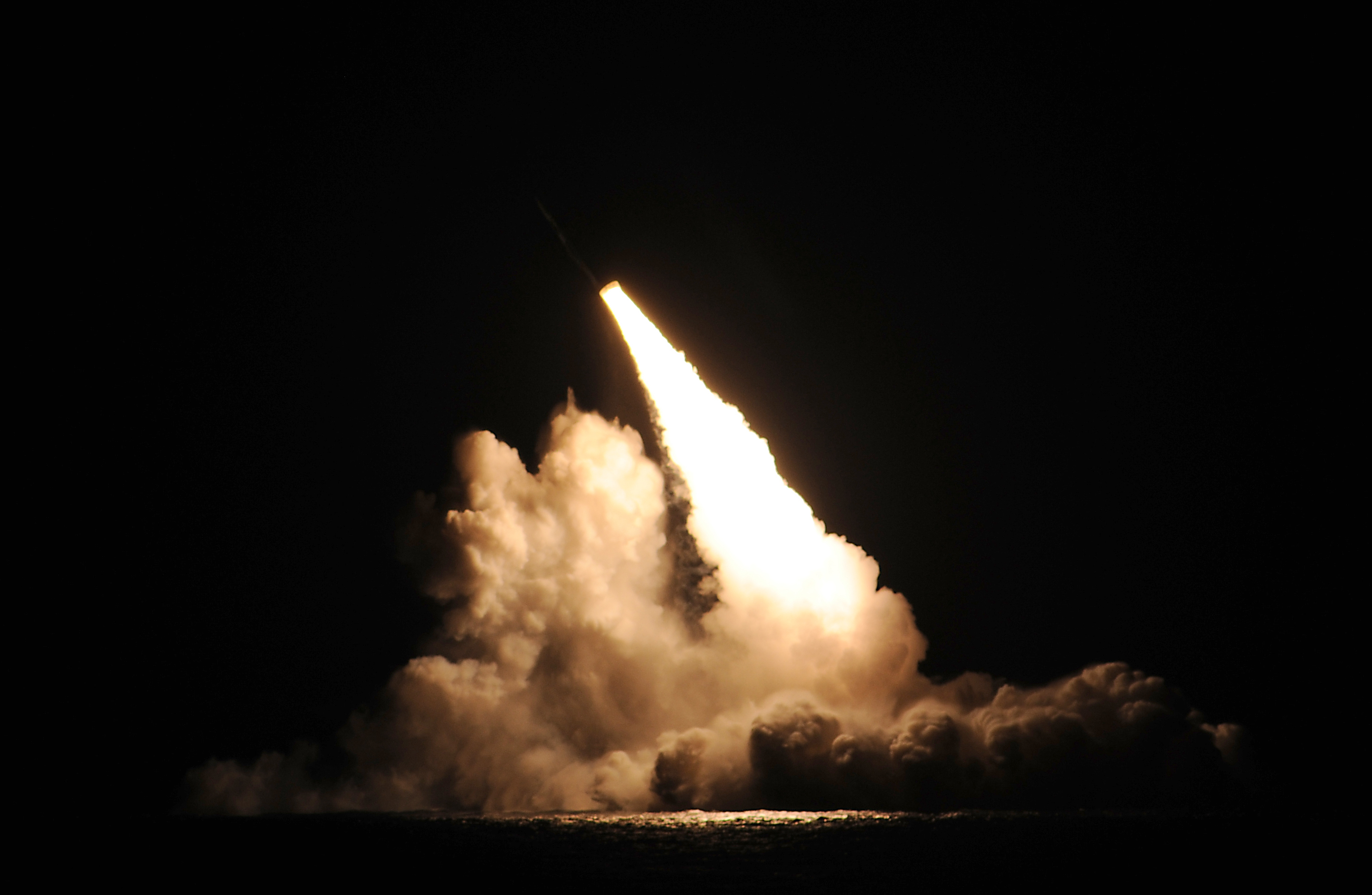

.png)
